Discover Cuba's Vivid Colors: A Photographer's Paradise
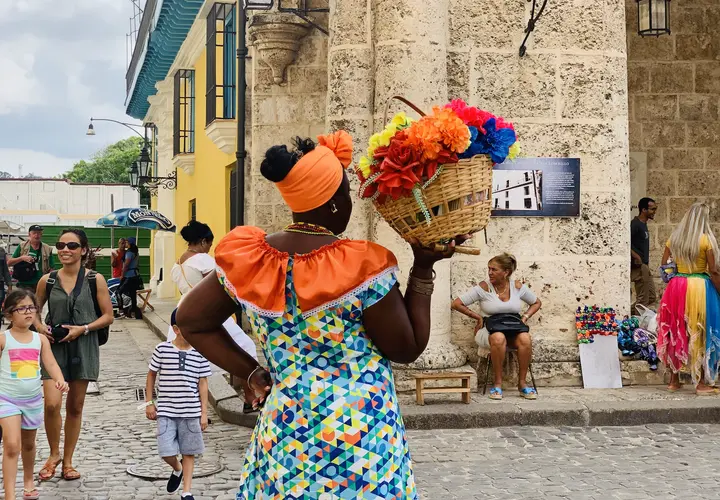
Cuba is one of the most exciting and distinctive tourist destinations in the world, thanks to its amazing beauty and bright colors that attract visitors from all over the world. The colors in Cuba show a unique diversity and reflect the rich culture and history of the country. In this article, we will explore the splendor of bright colors in Cuba through three subheadings.
Show key points
- Cuba stands out as a unique tourist destination due to its vibrant beauty and rich cultural history reflected in its bright colors.
- The chromatic architecture of Cuba, particularly in Havana’s Old Town, displays an eclectic blend of Spanish, Arab, Roman, and Greek influences highlighted by vivid color schemes.
- Cuban buildings feature artistic decorative elements such as colorful wooden doors, balconies, and colonial tiles, enhancing their cultural and visual appeal.
- ADVERTISEMENT
- The varied topography of Cuba, from lush mountains and fertile plains to sandy beaches, contributes to the island's vibrant and picturesque landscapes.
- Rich ecological diversity, including tropical forests and exotic flowers, makes Cuba a haven for plant lovers and nature enthusiasts.
- Cuba’s cultural life thrives through colorful music and dance traditions like salsa, son, mambo, and bolero, all showcasing diverse historical influences.
- Immersing oneself in Cuba's colorful architecture, exotic nature, and lively cultural expressions offers a deeply enriching and unforgettable travel experience.
Cuba chromatic architecture
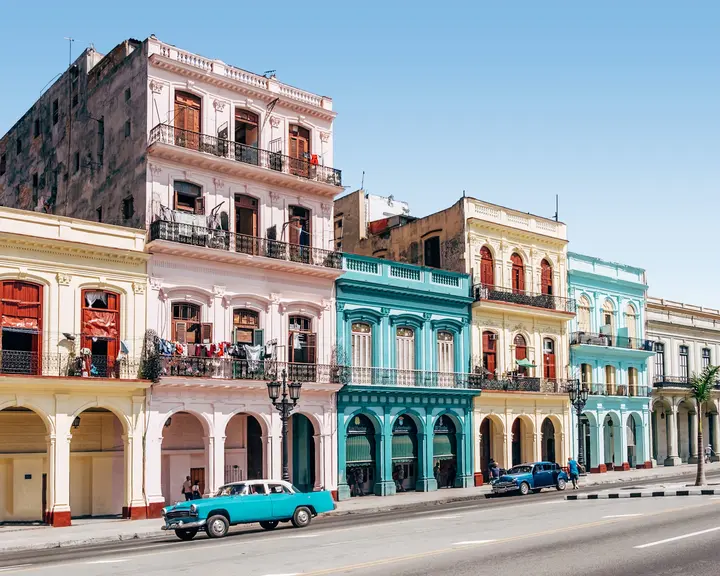
Cuba's chromatic architecture has a unique and distinct style that reflects the history and culture of the country. Known for its diversity and originality, Cuban architecture reflects a variety of cultural influences, ranging from Spanish and Arab art to many other styles.
Havana's Old Town is an outstanding example of Cuban chromatic architecture. Its roots date back to the sixteenth century, and its architectural charm can be seen and experienced when exploring its streets, squares and buildings. The buildings in Havana are unique, bright and colourful, using bright colors such as yellow, blue, green, red and orange to bring the buildings to life. Many buildings feature wooden doors and balconies that increase their beauty and splendor, in addition to bright colonial tiles that enhance architectural beauty.
Recommend
One of the factors that stands out in Cuban chromatic architecture is the artistic use of details and decorations. The buildings feature many decorations, such as windows, arches and decorative decorations. It also reflects Spanish art and is inspired by Roman and Greek times in many diverse buildings throughout the country.
Traditional materials are often used in the construction of color hydrangea buildings, such as stone, brick and wood. However, examples of buildings where modern materials, such as steel, glass and concrete, have also been found in some modern urban areas.
Topography and colorful vegetation of Cuba
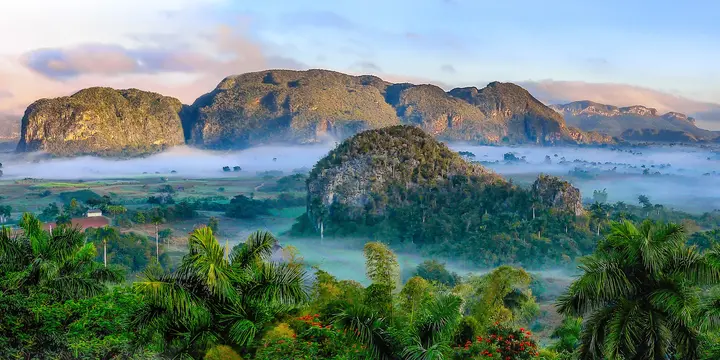
Cuba is an island in the Caribbean Sea characterized by its beautiful and diverse terrain and colorful plants. The topography of Cuba ranges from white sandy beaches and rocky beaches to green hills and mountains of the Caribbean mountain range.
The mountains of the Caribbean mountain range stretching in the northwest of the center of the country are among the most prominent terrain in Cuba. This region is famous for its magnificent mountainous terrain, deep valleys and picturesque waterfalls. Among the most prominent mountains in Cuba are the Sierra de las Villas, Sierra Maestra, Cama, El Ensencho and others.
The plains, north and central coast regions are characterized by fertile terrain and magnificent landscapes. The plains are distinguished by their low and attributed terrain and extensive agricultural land. The North and Central Coast regions are home to beautiful beaches, bays, wet areas, and swamps.
Cuba is also characterized by ecological diversity and colorful plants. Tropical forests, coastal and desert areas are home to many unique and colorful plant species. Tropical forests are home to huge trees, climbing plants and brightly colored wildflowers. Cuba's tropical forests are famous for the presence of rare trees such as the maple tree and the cinnamon tree.
Many different types of flowering plants are available in Cuba as well. The country's famous colorful flowers include species such as bovaria and hipsophicus flowers, which are known for their large, bright flowers and beautiful colors. In addition, Cuba is a great destination for lovers of social plants. The country is home to numerous botanical gardens and nature reserves that showcase the diversity of local and rare plants.
Colorful cultural life in Cuba
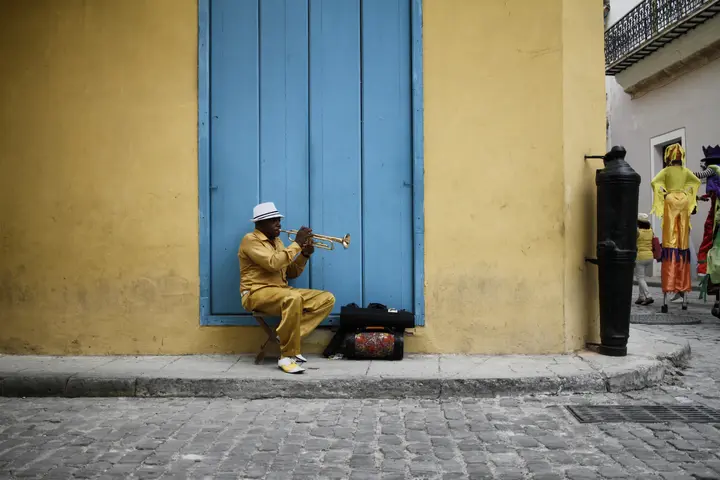
Cuba is known for its unique lyrical, dance and cultural heritage that expresses a variety of cultural and historical influences. The art, music and dance of Cuba are one of the most prominent elements of this amazing Caribbean country.
Cuba offers diverse artistic and musical styles, with influences from many different cultures. This is manifested in traditional music such as "Sun", "Ramba", "Mambo", "Chacha" and "Bolero". These styles share playing popular musical instruments such as guitar, trombone, piano, drums and maracas. Singing is characterized by emotional, expressive voices and elegance in musical arrangement.
Salsa is also one of Cuba's most famous lyrical and dance styles. Salsa combines elements of Afro-Cuban music with influences from mambo, jazz and rock. Salsa is distinguished by its enthusiastic rhythms and loud music distribution, which invites enthusiastic and expressive dances.
As for dance, Kobanion is known for a number of distinctive dance styles. Tango, mambo, son, cassino and musha are just some of the famous dance styles in Cuba. These dances have elegant, flexible and expressive movements based on the harmony and harmony of the music.
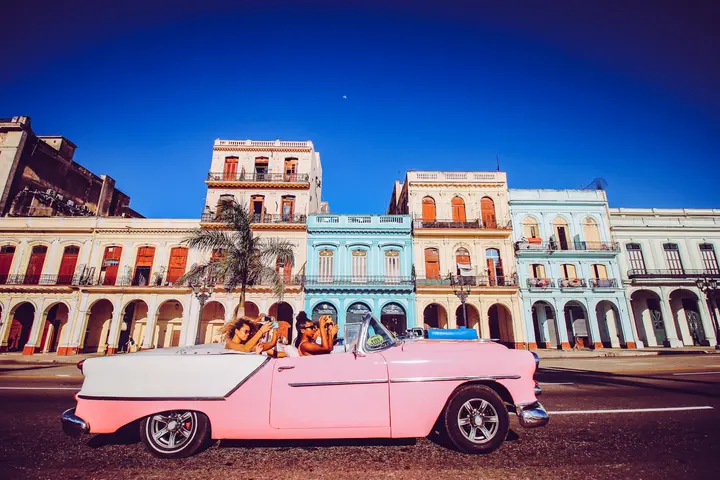
In conclusion, the presence of bright colors in Cuba is an integral part of the country's identity and rich culture. Visitors should explore the colorful architecture, picturesque nature, and multi-colored cultural life to enjoy the beauty and splendor of this charming country. The experience of discovering bright colors in Cuba will undoubtedly be an unforgettable experience that refreshes the soul and lifts the mood.








